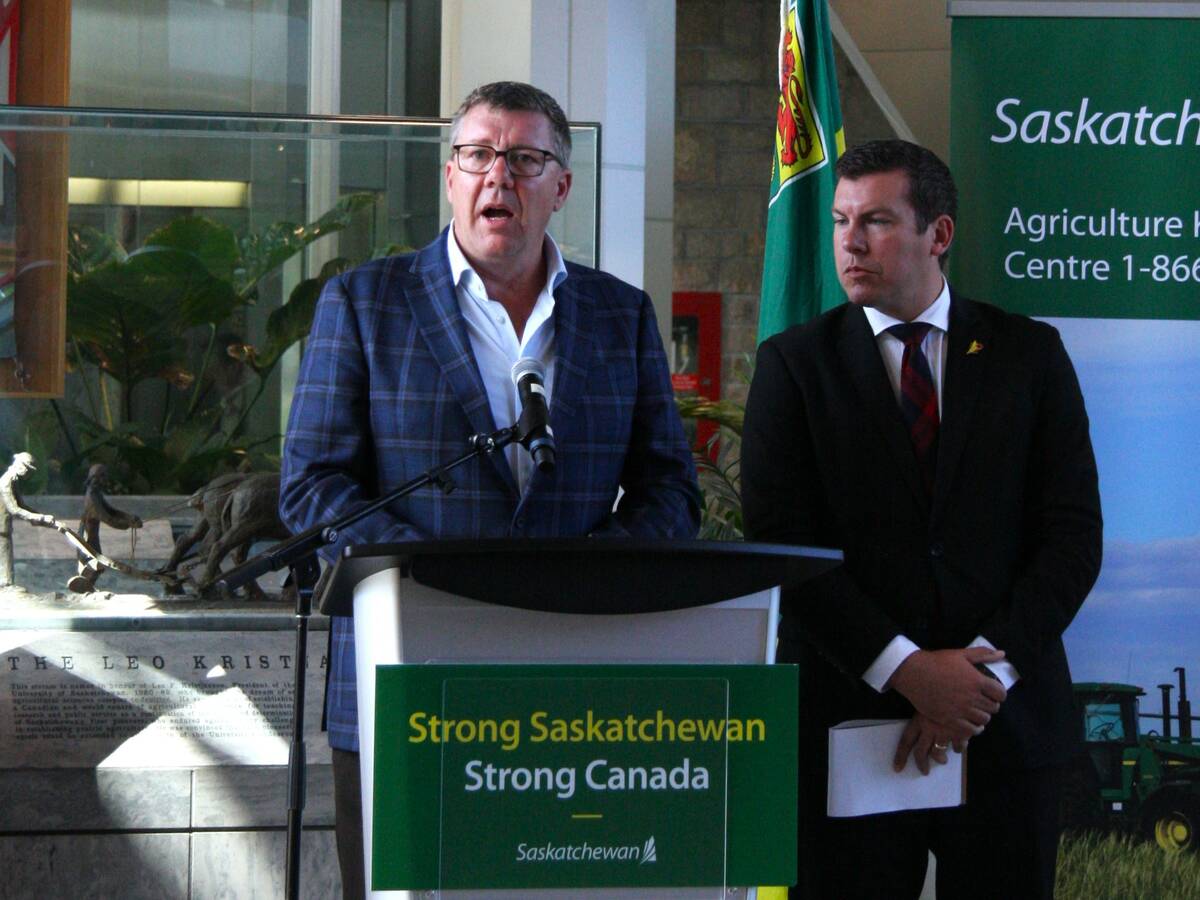Customers take out an average of $230 per acre and do it earlier than normal, a trend seen since ‘hectic’ 2021’ season
SASKATOON — Farmers have been active buyers of hail insurance the past three years, says an industry official.
Interest in the product jumped after a “pretty hectic” 2021 hail season when there was plenty of crop damage, said Scott McQueen, chief operating officer of Palliser Insurance.
Growers are also responding to the mounting costs of farming. Year-after-year, farmers keep telling him it’s the most expensive crop they have ever put in the ground.
Read Also

Key actions identified to address canola tariffs
Federal and Saskatchewan governments discuss next steps with industry on Chinese tariffs
Farmers are also keen on protecting their crops in what remains an historically high grain price environment, despite the drops that occurred in 2023 and 2024.
Palliser customers are taking out $230 per acre of coverage on average, which is relatively high, and they’re not dragging their feet on getting that coverage.
“We see insurance being purchased much earlier than in years past,” he said.
Crops are looking good this year, although in some areas there is excessive moisture.
Some insurance companies have stopped issuing policies for the year, while others, such as Palliser, plan to continue writing until Aug. 1.
“We kept our doors open in 2023 and will go to the very end in 2024,” said McQueen.
Claims are off to a slower start than usual, although the severity of the claims is typical.
Member companies of the Canadian Crop Hail Association are currently investigating about 1,000 claims of crop damage from storms that occurred between June 23 and July 1.
“Cereals have generally fared better as many were hit in the grassy stages of development and minimal damage to the plant was caused,” said McQueen, who is also chair of the association.
Environmental conditions have been favourable and crops have been able to quickly rebound.
However, crops ripen and become more brittle as the season moves along. That’s where a lot of damage can occur.
Hail season typically runs from mid-June through the end of September, where barely a day goes by without a claim somewhere in the Prairie region.
Some areas, such as Three Hills and Trochu in Alberta and Kindersley, Sask., seem to get hail every year, while others won’t see a stone fall from the sky for 10 years.
McQueen said there seems to be no rhyme or reason for what conditions result in an active hail season.
Some people believe this year should be extremely active with abundant spring moisture followed by a long stretch of above 30 C temperatures.
But so far there have been fewer claims than usual.
By contrast, 2021 was a severe drought year, so the hope was that there wouldn’t be much hail, but it was an extremely active year.
McQueen said there is still plenty of time for claims to surge in 2024.
“We’re just sort of getting into the meat of the hail season,” he said.


















